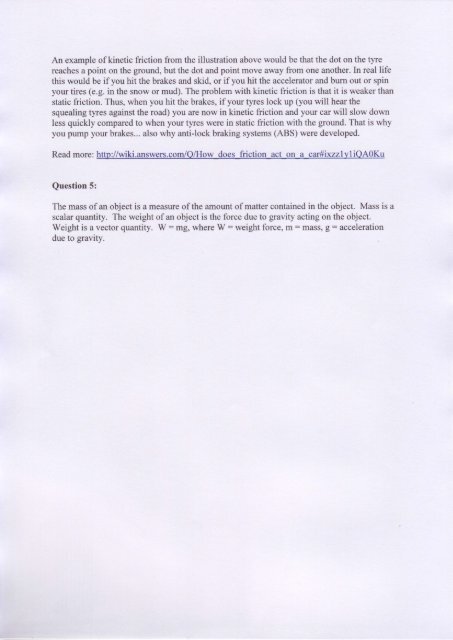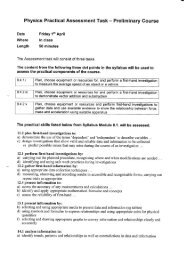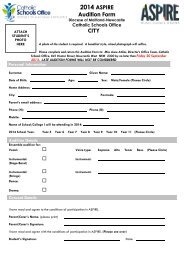Solutions to Force - Worksheet 1
Solutions to Force - Worksheet 1
Solutions to Force - Worksheet 1
You also want an ePaper? Increase the reach of your titles
YUMPU automatically turns print PDFs into web optimized ePapers that Google loves.
An example of kinetic friction from the illustration above would be that the dot on the tyre<br />
reaches a point on the ground, but the dot and point move away from one another. In real life<br />
this would be if you hit the brakes and skid, or if you hit the accelera<strong>to</strong>r and burn out or spin<br />
your tires (e.g. in the snow or mud). The problem with kinetic friction is that it is weaker than<br />
static friction. Thus, when you hit the brakes, if your tyres lock up (you will hear the<br />
squealing tyres against the road) you are now in kinetic friction and your car will slow down<br />
less quickly compared <strong>to</strong> when your tyres were in static friction with the ground. That is why<br />
you pump your brakes... also why anti-lock braking systems (ABS) were developed.<br />
Read more: http://wiki.answers.com/Q/Flow_does_friction act on_a_car#ixzzl yl iQAOKu<br />
Question 5:<br />
The mass of an object is a measure of the amount of matter contained in the object. Mass is a<br />
scalar quantity. The weight of an object is the force due <strong>to</strong> gravity acting on the object.<br />
Weightis avec<strong>to</strong>rquantity. W-mg, where W-weightforce, m:masS, g: acceleration<br />
due <strong>to</strong> gravity.<br />
.r-"i***,<br />
$gF'ii.<br />
'
















